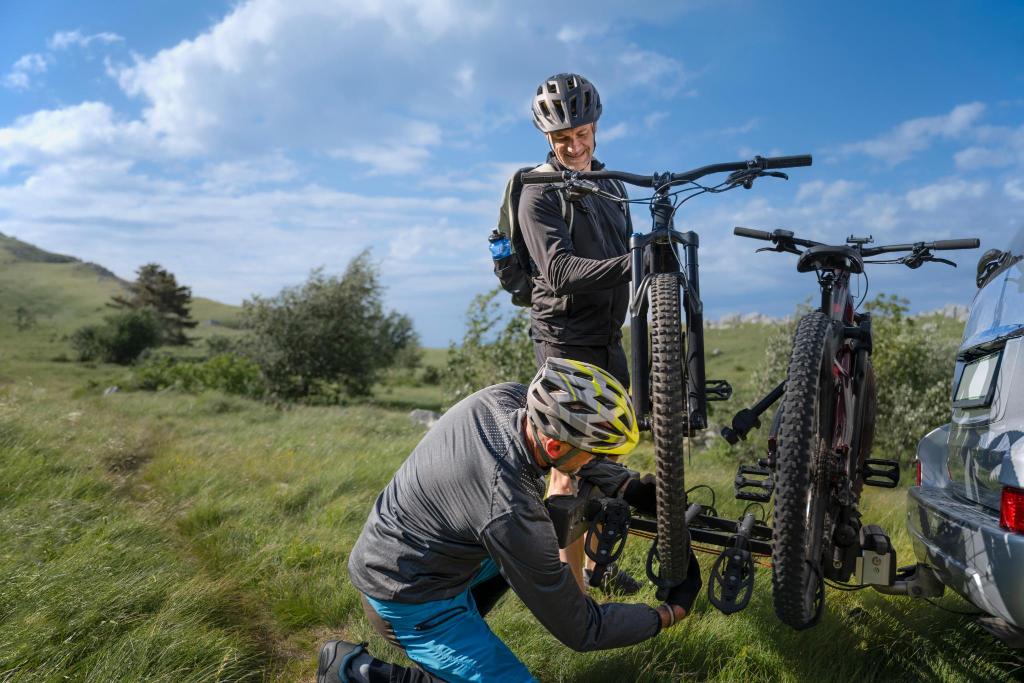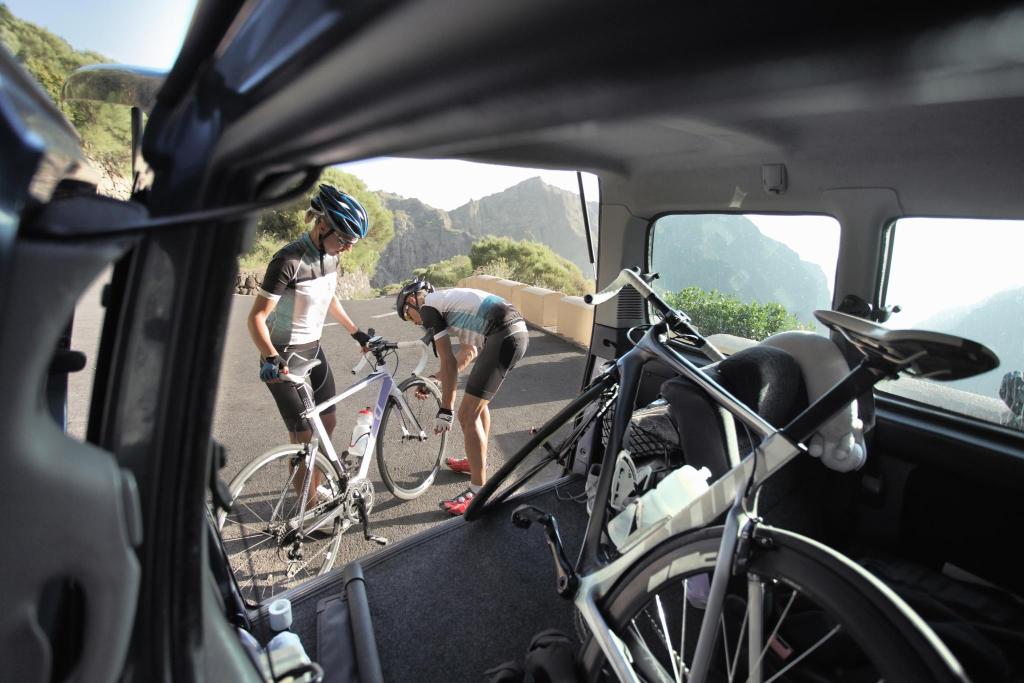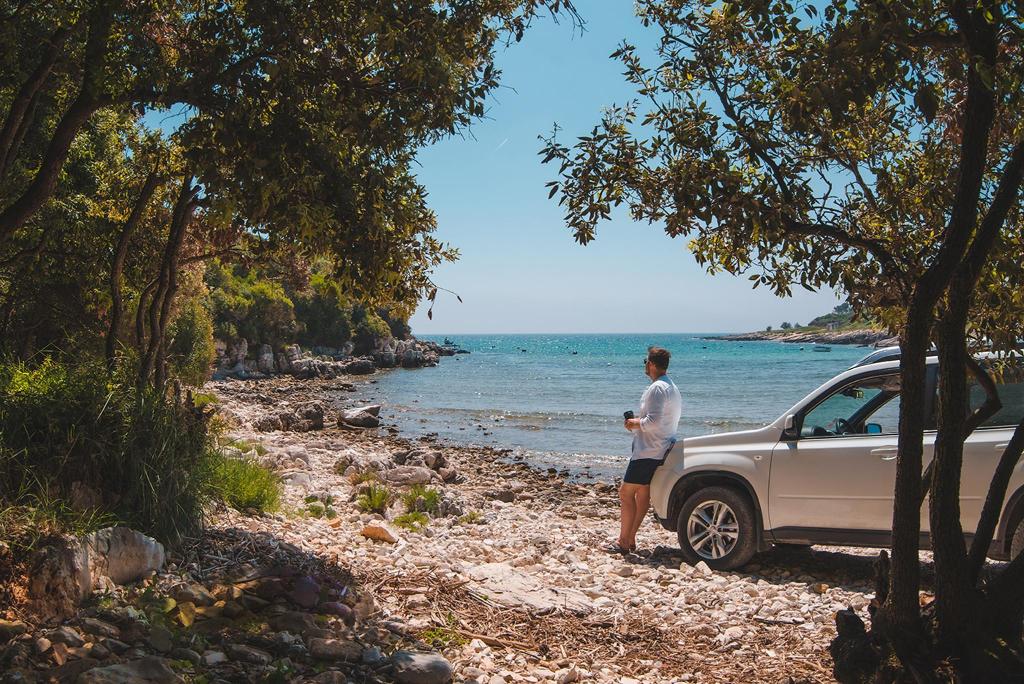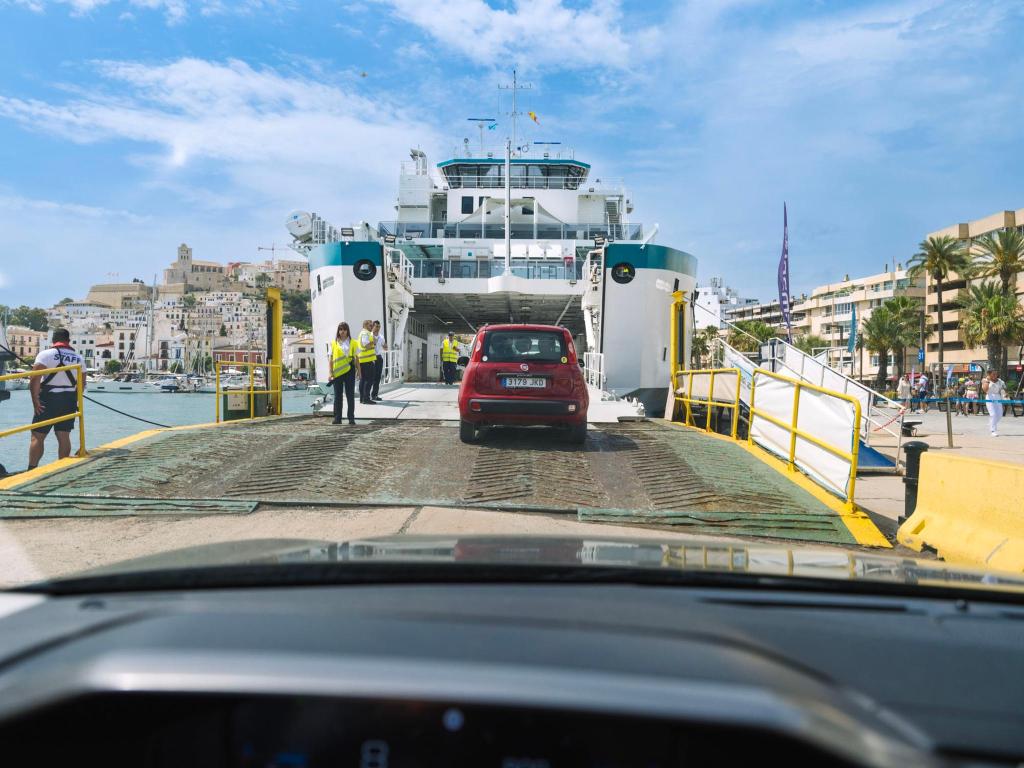
How to Travel with Bikes in a Rental Car: FAQs
By choosing the appropriate vehicle, using the correct equipment, and following the rental company's guidelines, you'll be ready to hit the road (and the bike trails) in no time.
For cycling enthusiasts, bringing your bike along on your travels opens up a world of exciting possibilities. Whether you're planning a cross-country adventure or a quick weekend getaway, knowing how to travel with bikes in a rental car is essential. This guide will walk you through everything you need to know about traveling with bikes in a rental car, from choosing the right vehicle to avoiding extra charges.
Can I use a bike rack on the roof or trunk of a rental car?

One of the most common questions cyclists ask when renting a car is whether they can use a bike rack. The answer isn't always straightforward and can vary depending on the rental company and specific vehicle.
- Roof racks: many rental cars come equipped with roof rails, which can be used to attach a roof-mounted bike rack. However, it's crucial to check with the rental company beforehand to ensure this is allowed and doesn't violate any terms of the rental agreement.
- Trunk-mounted racks: these are typically easier to install and remove than roof racks. However, they come with a higher risk of damaging the car's paint or body. Some rental companies may prohibit the use of trunk-mounted racks for this reason.
- Hitch-mounted racks: if the rental car has a trailer hitch, this can be an excellent option for transporting bikes. Again, check with the rental company to ensure this is permitted.
Always inform the rental company in advance what type of rack you plan to use and get their approval in writing, to avoid any potential issues later.
Can I rent a bike rack from the rental company?
Some car rental companies offer bike racks as an add-on option. This can be a convenient solution, as you're guaranteed to have a rack that's compatible with the rental vehicle and approved for use. However, availability can be limited, and there's often an additional daily charge for this service.
If you frequently travel with your bike, investing in a versatile, portable bike rack of your own might be more cost-effective in the long run. Just remember to always get approval from the rental company before using your own rack on their vehicle.
Do I need a bike rack?

While a bike rack is often the most convenient way to transport your bike, it's not always necessary. Depending on the size of your bike and the rental car, you might be able to fit your bike inside the vehicle. This method has several advantages, such as:
- No need for external equipment
- Your bike is protected from the elements and potential theft
- You avoid any potential damage to the exterior of the rental car
To transport your bike inside the car, keep in mind to:
- Remove the front wheel of the bike (and the rear wheel if necessary)
- Lower or remove the seat post
- Turn the handlebars parallel to the frame
- Use a bike bag or blankets to protect both the bike and the car's interior
Remember to clean your bike thoroughly before putting it in the car to avoid getting dirt or grease on the interior.
What type of car should I rent to transport a bike?

The ideal rental car for transporting bikes depends on several factors, including the number of bikes you're carrying, the length of your trip, and your budget. Here are some options to consider:
- SUV or minivan: these vehicles offer ample interior space and are often equipped with roof rails, making them versatile choices for bike transport.
- Hatchback or station wagon: these can be good options if you're planning to transport your bike inside the vehicle.
- Pickup truck: if available, a pickup truck can be an excellent choice for transporting multiple bikes, either in the bed or with a rack.
When booking your rental car, specify that you'll be traveling with a bike. This will ensure that you get a vehicle that can accommodate your needs.
Do I need extra insurance?
It's wise to consider additional insurance coverage. Most standard rental car insurance policies don't cover damage caused by externally mounted equipment like bike racks. Here are some options to consider:
- Supplemental Liability Protection (SLP): this covers damage to other vehicles or property.
- Loss Damage Waiver (LDW): this covers damage to the rental car itself.
- Personal Effects Coverage: this protects your personal belongings, including your bike, in case of theft or damage.
Always read the fine print of any insurance policy to understand what's covered and what's not. If you're using a credit card that offers rental car insurance, check if it covers bikes and bike racks.
Tips for avoiding extra charges

To ensure your travel adventure doesn't come with any unexpected costs, keep these tips in mind:
- Document everything: before leaving the rental lot, thoroughly inspect the car and document any existing damage. Take photos or videos as evidence.
- Use proper padding: whether you're using a rack or transporting your bike inside the car, use appropriate padding to prevent scratches or dents.
- Remove the rack carefully: if you've installed a bike rack, remove it carefully before returning the car. Check for any marks or damage it might have caused.
- Clean up after transportation: if you've transported your bike inside the car, make sure to clean the interior thoroughly before returning the vehicle.
- Return on time: late returns can result in hefty fees, so plan your trip carefully and allow extra time for removing bikes and racks.
Additional considerations for international travel
If you're planning to travel internationally with your bike, there are a few extra factors to consider:
- Flying with your bike: most international trips will involve a flight. Check your airline's policies regarding bike transport, including any additional fees or packing requirements.
- Rental policies abroad: bike rack policies can vary significantly between countries and rental companies. Always confirm the rules with your specific rental provider.
- Different road rules: familiarize yourself with the cycling laws and road rules of your destination country. Some may have specific requirements for transporting bikes on vehicles.
- Language barriers: learn key phrases related to cycling and car rentals in the local language to help communicate your needs more effectively.
Whether you're exploring local trails or embarking on an international cycling adventure, traveling with bikes in a rental car can be a smooth and enjoyable experience with the right preparation. By choosing the appropriate vehicle, using the correct equipment, and following the rental company's guidelines, you'll be ready to hit the road (and the bike trails) in no time.

- Premi delle compagnie aeree
- Dritte sui voli
- Viaggi avventura
- Viaggi di lusso
- Viaggiare a tempo pieno
 Essential Tips for Smart Car Rental Decisions2 aprile 2025
Essential Tips for Smart Car Rental Decisions2 aprile 2025 What Is an ‘SUV’ in Car Rental?2 aprile 2025
What Is an ‘SUV’ in Car Rental?2 aprile 2025 7 Airline Business Classes Compared31 marzo 2025
7 Airline Business Classes Compared31 marzo 2025 Can I Take My Hire Car on a Ferry?28 marzo 2025
Can I Take My Hire Car on a Ferry?28 marzo 2025 Got an Unexpected Charge From Your Car Rental?28 marzo 2025
Got an Unexpected Charge From Your Car Rental?28 marzo 2025 How Can I Get the Exact Hire Car That I Want?28 marzo 2025
How Can I Get the Exact Hire Car That I Want?28 marzo 2025 What Is a Fuel Policy?28 marzo 2025
What Is a Fuel Policy?28 marzo 2025 What To Do if You’re on a Diverted Flight?28 marzo 2025
What To Do if You’re on a Diverted Flight?28 marzo 2025 Understanding Rental Car Fees and Charges25 febbraio 2025
Understanding Rental Car Fees and Charges25 febbraio 2025 How To Avoid Losing Your Rental Car Deposit18 febbraio 2025
How To Avoid Losing Your Rental Car Deposit18 febbraio 2025 Car Rental Reviews: How Reviews Help You14 febbraio 2025
Car Rental Reviews: How Reviews Help You14 febbraio 2025 Tips for Returning Your Rental Car if the Counter is Closed30 dicembre 2024
Tips for Returning Your Rental Car if the Counter is Closed30 dicembre 2024 5-Minute Guide: Driving in the US28 dicembre 2024
5-Minute Guide: Driving in the US28 dicembre 2024 7 Easy Ways to Save Money on Car Rental27 dicembre 2024
7 Easy Ways to Save Money on Car Rental27 dicembre 2024 How to Rent a Car for Your Ski Trip27 dicembre 2024
How to Rent a Car for Your Ski Trip27 dicembre 2024 The Complete Guide To Airline Food27 dicembre 2024
The Complete Guide To Airline Food27 dicembre 2024 How Old Do You Have to Be to Rent a Car?26 dicembre 2024
How Old Do You Have to Be to Rent a Car?26 dicembre 2024 What is a Layover? A Complete Guide: Here’s What to Expect24 novembre 2024
What is a Layover? A Complete Guide: Here’s What to Expect24 novembre 2024 Standby Flights: What are They, and How do They Work?24 luglio 2024
Standby Flights: What are They, and How do They Work?24 luglio 2024
Potrebbero piacerti anche...
Learn more about the types of rental cars available when planning a vacation.
Your complete guide to understanding car rental fees, policies and optional add-ons to help you make informed choices.
Avoid common car rental pitfalls with our guide to the top 10 rental fails. Learn why people don't get their hire cars and how to ensure a smooth pickup.
Planning to choose an 'SUV' for your next rental? Get a clearer view of what an 'SUV' is with our handy guide.
How to avoid additional GPS/Sat Nav costs by using offline maps during your rental period.
Can I take my hire car on a ferry? Find out how to travel on a ferry with rental cars, the costs and ferry regulations for rental cars.












